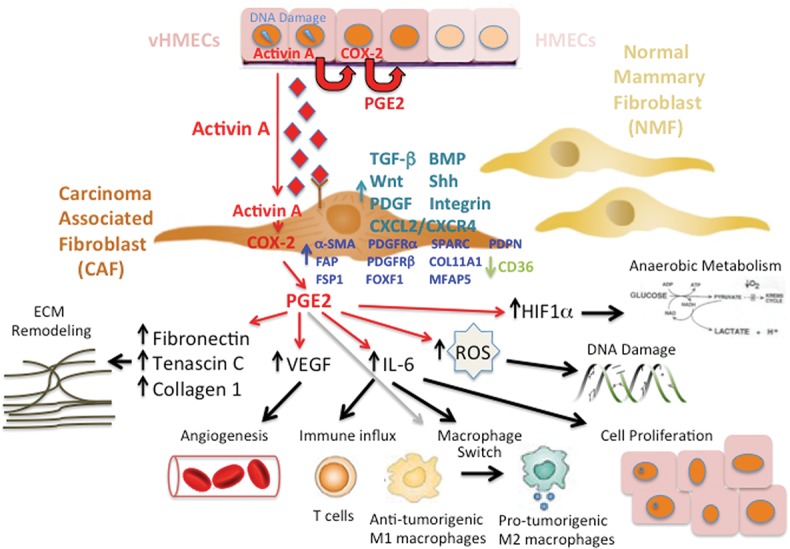Figure 2.

Birth of a CAF. Example of a p53/activin A/cyclooxygenase-2 (COX-2)-dependent DNA damage pathway originating in epithelial cells that elicits protumorigenic effects in neighboring fibroblasts through paracrine stimulation via activin A. Activation of fibroblasts by activin A triggers a spectrum of COX-2-driven protumorigenic phenotypes, including ECM remodeling, angiogenesis, immune influx, macrophage switch, cell proliferation, DNA damage, and acquisition of a hypoxic/glycolytic microenvironment. Also shown are the signaling pathways that are dysregulated and the CAF-specific proteins whose expression levels change upon acquisition of the CAF phenotype. Dysregulated signaling pathways include up-regulation of TGF-β, bone morphogenetic protein (BMP), Wnt, Sonic hedgehog (Shh), platelet-derived growth factor (PDGF), C-X-C motif ligand 12 (CXCL12)/CXCR4, and integrin-mediated signaling. Changes in protein expression include up-regulation of α-smooth muscle actin (α-SMA), fibroblast-activating protein (FAP), fibroblast-specific protein-1 (FSP1), PDGF receptor a (PDGFRa), PDGFRb, Forkhead box F1 (FOXF1), SPARC, Podoplanin (PDPN), and, more recently, collagen 11-α1 (COL11A1) and microfibrillar-associated protein 5 and down-regulation of CD36.
